Hydrotherapy
Table of Contents
Introduction:
Hydrotherapy is a form of therapy that involves the use of water to treat various health conditions. This type of therapy has been used for centuries and is believed to have originated from ancient Greek and Roman cultures.
Hydrotherapy is an alternative (naturopathic or nonpharmaceutical) therapy. If a person chooses to use hydrotherapy, make sure to receive it from a reputable clinic and provider. Water is used for health purposes, also known as water therapy or hydrotherapy. The treatments may also be referred to as hydropathy, aquatic therapy, or water therapy, depending on the initiative and use.
The treatments may also be referred to as hydropathy, aquatic therapy, or water therapy, depending on the initiative and use.
There are many advantages to different types of hydrotherapy, including treating joint pain with water exercises and decreasing muscle stress with cold or hot showers or baths.
Before incorporating hydrotherapy into a treatment plan, patients should always speak with a doctor or physical therapist first.
What is Hydrotherapy?
Hydrotherapy is a technique that uses water to treat a variety of symptoms throughout the body. It can be called water therapy, aquatic therapy, pool therapy, or balneotherapy.
Hydrotherapy refers to utilizing water as therapy in any form. For instance, it might be beneficial as a treatment for long-term health illnesses like arthritis and fibromyalgia as well as for short-term skin-related problems like burns and septic ulcers.
Water used in water therapy treatments can be either hot or cold, with different water pressure and velocity.
Aquatic therapy, also known as hydrotherapy, involves special exercises that you do in a warm-water pool. The water is often warmer than a regular swimming pool, between 33 and 36 degrees Celsius.
As opposed to aqua-aerobics, which may be fairly challenging, aquatic therapy often emphasizes moderate, controlled motions and relaxation.
Doctors have used water to treat injuries and diseases as far back as the beginning of recorded history. In the past 20 years, medical professionals have begun to consider hydrotherapy as an effective treatment for a few ailments and symptoms. Studies have shown that hydrotherapy can be a great way to treat symptoms including stiffness in the joints and muscle soreness.
Some hydrotherapy methods are as simple as sitting in a warm bath, which people can do at home. Other techniques make use of specialized spaces or tools, like a cold sauna.
Equipment for hydrotherapy may include:
- Physical therapy tanks
- swimming pools
- Whirlpool spas
- Hot tubs
- Saunas
- Showers
- Baths
Depending on the treatment’s objective and the practitioner, each will have a drastically different method of application.
Aquatic therapy can be helpful however many of the joints are affected. It’s sometimes used if the person had joint replacement surgery or if they have back pain, ankylosing spondylitis, psoriatic arthritis, and osteoarthritis, but it can be used for other types of arthritis as well.
Hydrotherapy refers to the application of water to relieve discomfort and treat specific diseases. Hydrotherapy tools include things like pools, spas, whirlpools, hot tubs, and physiotherapy tanks. Sitting in warm water can help people with conditions like burns, septic ulcers, lesions, amputations, and arthritis. For the patient’s health and safety, hydrotherapy requires the use of clean, safe water, which must be maintained. Hydrotherapy requires the use of clean, safe water, which must be maintained for the patient’s health and safety. Many of these patients have weakened immune systems as a result of ongoing infections, making them especially vulnerable to developing new infections from tainted hydrotherapy pool water. Accidental consumption of contaminated water, breathing in sprays and aerosols from the water, and allowing open wounds to come into touch with the water are all potential infection pathways.
Hydrotherapy tanks, pools, and birthing tanks provide special issues for infection management since the water is constantly contaminated with naturally occurring bacteria, some of which may not be harmful to a healthy person.
How Does Hydrotherapy Work?
Hydrotherapy works on a few different levels.
- Water temperature: Warm water encourages the muscles and joints to relax. Relaxation helps to move easier and makes it easier to exercise.
- Buoyancy: A person naturally floats in the water, so the water helps the body support itself. This reduces strain on the joints and muscles.
- Resistance: It is harder to move via water than air because of the resistance. This helps to build muscle strength.
Types of Hydrotherapy:
The ideal type of hydrotherapy can be recommended by a doctor, physical therapist, or alternative health expert depending on the patient’s health goals.
Aquatic activity
Aquatic exercise is a type of low-impact exercise that is often done in a pool using specialized gear. It makes it possible for people to increase their heart rates and muscle activity without placing undue strain on their joints.
These exercises are excellent for elderly persons who may be at a higher risk of falling or who simply find working out in a low-impact environment simpler, as well as for those with arthritis or fibromyalgia.
Warm water baths
Hydrotherapy includes taking a warm water bath and relaxing. To enhance the bath, the person may also add salts, minerals, essential oils, or other items.
Sitz bath
Warm or cold water is used in sitz baths, which are shallow baths. Sitz baths may be recommended by professionals to treat conditions like cramping or hemorrhoids.
Wraps, compresses, and fomentation
Hydrotherapy also includes the use of wraps and compresses that use hot, warm, or cold water. These could provide focused relief from minor symptoms and aid in the course of treatment.
Saunas
Depending on the definition, saunas can be either wet or dry heat, as well as chilly or chilled. These entail sitting in a space that has been heated or dried to a particular temperature.
Water circuit therapy
Water circuit therapy, also known as contrast hydrotherapy, involves using a variety of hydrotherapy techniques one after another, typically switching between warm and cold water to improve circulation and relieve symptoms.
Depending on the practitioner and the patient, the circuit may differ significantly, although it may incorporate a variety of approaches, including:
- Warm baths
- Wet or dry saunas
- Cold plunges
- Cool baths
Immersion therapies
Immersion therapies include a patient submerging herself in water to get relief. They include:
- Warm baths
- Cool baths
- Cold plunges
- Sitz baths
- Hot tubs with jet massages
- Whirlpool baths
Why is Hydrotherapy used?
Hydrotherapy is primarily used to reduce symptoms like pain and stiffness. A doctor might suggest a form of hydrotherapy as part of the broader treatment or symptom management plan. Hydrotherapy can assist people with these symptoms to feel better:
- Pain.
- Stiffness.
- Bruising.
- Swelling.
- Muscle pain.
- Menstrual pain.
Hydrotherapy may only be used for cleansing purposes, as water therapy, or as a type of physical therapy. However, its primary function, which has existed for a very long time, is to transport heat and cold to the body. A variety of techniques and methods are used in hydrotherapy, and many of them make use of water as a medium to promote thermoregulatory reactions for therapeutic benefit.
Hydrotherapy is used in nursing, where it has a long history of use, in addition to therapy. It continues to be widely used for burn treatment, however, shower-based hydrotherapy techniques have been increasingly utilized in preference to full-immersion procedures, partially for the convenience of cleaning the apparatus and minimizing infections due to contamination. When tissue removal is required to treat wounds, hydrotherapy, which performs a specific type of mechanical debridement, may be employed. Examples of this include therapeutic irrigation with suction and guided wound irrigation.
What does Hydrotherapy treat?
Using water in various forms and temperatures can help people with a variety of ailments feel better. Hydrotherapy can deliver symptomatic relief to people with the following conditions:
- Osteoarthritis.
- Fibromyalgia.
- Parkinson’s disease.
- Neuropathy.
- Ankylosing Spondylitis (AS).
- Multiple sclerosis (MS).
- Cerebral palsy.
It is essential to remember that hydrotherapy doesn’t cure any of these conditions. It shouldn’t take the position of any treatments or medications the healthcare provider prescribes to you. Hydrotherapy typically improves people’s health by momentarily reducing pain, stiffness, and edema.
Finding a safe way to feel better is never wrong, but hydrotherapy won’t be able to treat many conditions especially more severe chronic illnesses.
Hydrotherapy for burns:
Hydrotherapy can aid people with burn injuries. Jets of water are an efficacious and safe way to clean wounds and burned skin. Treating burns with pressurized water can also help relieve:
- Pain.
- Redness.
- Scarring.
- Permanent discoloration.
Hydrotherapy and physical therapy
In addition to physical therapy, hydrotherapy is a beneficial addition for those recovering from an operation or injury. Moving in water gives a low-resistance way to exercise safely. People have definitely heard of swimming or water aerobics as fantastic alternatives for those who face pain from other sorts of exercise.
Always talk to the surgeon or provider before resuming any physical activity after surgery. Hydrotherapy tanks, pools, or tubs can raise the risk of infection. A person might also need to wait a set amount of time after the surgery before they can get the incision site wet.
Hydrotherapy and pregnancy
Hydrotherapy has been revealed to be beneficial for some pregnant women. A study found that pregnant people with high blood pressure may be able to decrease their risk for complications like preeclampsia with regular hydrotherapy sessions.
Some pregnant people choose to labor in warm water, which can increase their comfort and decrease pain and anxiety.
Talk to the healthcare provider about what a person wants to be included in the pregnancy and labor plan.
Hydrotherapy and weight loss:
Hydrotherapy on its own doesn’t cause, stimulate or enhance weight loss. However, exercise plans that contain working out in water can help a person lose weight and improve their overall health.
Hydrotherapy for Children:
Hydrotherapy is typical in the treatment of children with neurological and orthopedic conditions, or following surgery to improve function and improve quality of life. Pediatric conditions that may aid from hydrotherapy
Hydrotherapy can be helpful in a number of pediatric conditions (conditions that affect children), including:
- Cerebral palsy,
- Spina bifida,
- Muscular dystrophy,
- Autism,
- Dyspraxia,
- Down’s syndrome
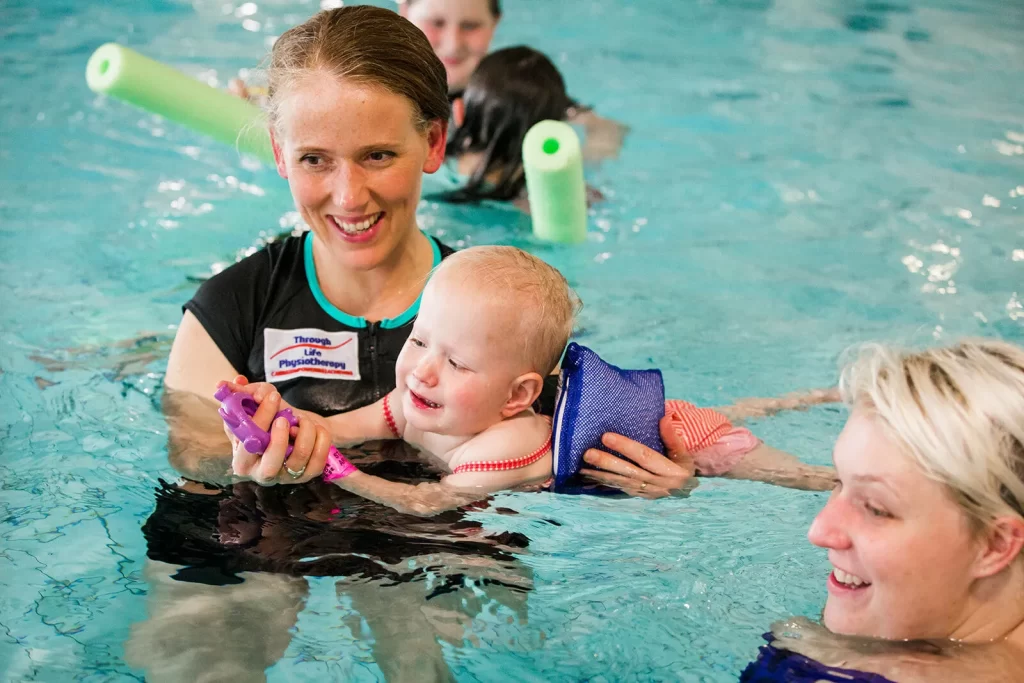
Purposes of hydrotherapy for children:
Hydrotherapy for children desires to achieve similar aims to that of a land-based program. It will be utilized in combination with a land-based program to ensure the carry-over of functional skills. Typical aims of a pediatric hydrotherapy program include:
- Promotion of normal development
- Working towards physical milestones
- Decrease pain
- Normalise tone
- Increase strength
- Increase function
- Provide relaxation if appropriate
- Mobilise stiff joints
- Increase ability to weight-bear
Hydrotherapy for Cardiovascular & Pulmonary Conditions:
Patients with a history of chronic cardiovascular/pulmonary disorders can benefit from hydrotherapy by increasing their muscular and cardiopulmonary endurance.
What Cardiovascular and Pulmonary conditions may aid from hydrotherapy?
Any patient analyzed with a longstanding cardiovascular or pulmonary condition would help from the inclusion of hydrotherapy within their rehabilitation program. Cardiovascular and pulmonary conditions hydrotherapy aids with include:
- Chronic Obstructive Pulmonary Disease (COPD)
- Heart failure
- Angina
- Following Myocardial infarction (heart attack)
- Following heart or lung surgery
Hydrotherapy session with close care from a specialist physiotherapist
Hydrotherapy may prove to be particularly beneficial in people who find exercise on land a challenge due to pain or restriction. This set of people may present with a cardiovascular or pulmonary condition coupled with a musculoskeletal complication such as:
-Osteoarthritis
-Rheumatoid arthritis
-Following recent surgery
-Lower back pain
-Recent ankle sprain or any other distressing lower limb injury
Physiotherapy sessions will take place in specialized hydrotherapy pools Above the physiotherapy sessions will take place in specialized hydrotherapy pools
What are the purposes of hydrotherapy for Cardiovascular and Pulmonary Conditions?
Hydrotherapy may be used as part of a pulmonary rehabilitation or cardiac rehabilitation program. People with a variety of medical issues can exercise more comfortably because of the unique supportive atmosphere that hydrotherapy offers. The aims of rehabilitation are:
- Enhance exercise tolerance
- Lowering the incidence of dyspnoea (shortness of breath)
- The enhancement of well-being and life quality.
- Strengthen muscles
- Enhance patients’ knowledge and awareness so they are sufficiently able to deal with their condition on an everyday basis.
- Decrease pain
- Improve function
Hydrotherapy for Neurological Conditions
In combination with other rehabilitative methods, hydrotherapy is used to treat people with a variety of neurological diseases. Patients with neurological conditions may frequently execute tasks in the water that they cannot do on land.
Neurological conditions that may benefit from hydrotherapy are:
- Multiple sclerosis (MS)
- Cerebro-Vascular Accident (CVA – typically known as a stroke)
- Muscular dystrophy
- Parkinson’s disease
- Traumatic brain injury
- Guillain-Barré syndrome
Purposes of hydrotherapy for neurological conditions
The objectives of hydrotherapy are similar to those of an on-land program; however, they can be more successfully attained due to the physical properties of warm water:
- Avoid soft tissue bruising, and move stiff joints
- Use of buoyancy effect to improve muscle activity
- Develop motor control through the use of functional goals
- Improve muscle strength
- Improve endurance
- Boost function and enhance independence
- Improve the quality of life
Benefits of hydrotherapy:
Using hydrotherapy as part of the physiotherapy treatment can lead to many benefits such as:
- Decreased pain: Using warm water had a significant pain-relieving effect in people with chronic diseases of the musculoskeletal system and connective tissues.
- The area may experience fewer discomfort thanks to the warm water’s potential to calm pain signals, relax the muscles, and improve blood flow.
- Improving mental health
- Some people’s mental health may be improved by water-based activities, according to the Centres for Disease Control and Prevention (CDC). For instance, those who have fibromyalgia could discover that water exercise treatment lessens their anxiety and melancholy. Swimming also improves mood and helps release tension through exercise.
- Faster recovery from surgery
- Re-education and encouragement of normal movement
- Arthritis symptoms
- Hydrotherapy may also help some arthritis sufferers. For instance, one study discovered that eight weeks of aquatic training significantly improved knee function and pain markers in persons with osteoarthritis.
- Another study discovered that persons with rheumatoid arthritis who exercised moderately in the water while taking their medicine experienced improvements in their illness markers, including lower levels of oxidative stress.
- Allows persons who are unable to bear their own weight to stand up due to the buoyancy of water.
- Improved walking technique
- Improved aerobic fitness levels
- Improved balance and coordination
- Increased strength of weak muscles
- Increased range of movement of the joints
- Improved independence and function
- Improved circulation in the body
- Mobilizing and lengthening the muscles
- Improve self-confidence
- Decrease the fear of falling
- A relaxing and calming experience:
- Numerous hydrotherapy techniques also promote mental and physical relaxation. Warm water may aid in reducing muscle tension and encouraging a relaxed frame of mind.
- Recovering from workouts
- Different hydrotherapy methods that alternate between warm and cold water can be used by athletes. Many people believe that this type of contrast hydrotherapy aids in their recovery from strenuous exercise and helps them avoid delayed onset muscle soreness.
To maximize these advantages, the physiotherapists will ensure that the hydrotherapy program is customized to your needs. Our physiotherapists will make sure you feel at ease in the water and will be able to modify the program if you get uneasy. For example, performing exercises while using the sidebar as support.
Contraindications:
Following are the serious and absolute contraindications to prescribing hydrotherapy:
Serious contraindications:
- Cardiovascular disease
- Cardiopulmonary disease
- Diabetic
- Balance disorder
- History of CVA, Epilepsy
- Incontinence
- Labyrinthitis
- Cold
- Influenza
- Fever
- Skin conditions
- Chemical allergies (Chlorine)
Absolute contraindications:
- Contagious diseases
- Hepatitis
- Tracheotomy
- Urinary tract infection
- Serious Epilepsy
- Urinary incontinence
- Open Wounds
- Recently Surgery
- Hydrophoby
The risk or side effects:
Hydrotherapy is safe and has rare side effects. However, some side effects may contain:
- Slipping or other accidents
- Burns from scalding water
- Frostbite from the icy water
- Infections
Summary:
Hydrotherapy may have various benefits as a complementary therapy to standard treatment.
Relaxing hydrotherapy techniques, such as foot baths, and saunas, may help people unwind and reduce stress as well as unpleasant symptoms.
In each case, it is still crucial to work with a doctor to choose the most suitable practices for the individual.
FAQs:
What type of water is used in Hydrotherapy?
Hot or cold water is used in water therapy, with the flow and pressure varying between treatments. The goal is to lessen symptoms on both a physical and mental level. Some hydrotherapy methods are as easy to perform at home as taking a warm bath.
What chemicals are used in Hydrotherapy?
Chlorine compounds now used in hydrotherapy pools contain sodium hypochlorite solution, calcium hypochlorite granules/tablets, sodium dichloroisocyanurate granules, and other chemicals.
What is the difference between water therapy and Hydrotherapy?
The difference between hydrotherapy and aquatic therapy is that aquatic therapy utilizes water as the primary treatment modality, whereas hydrotherapy can also comprise other methods such as heat packs, cold packs, electrical stimulation, ultrasound waves, or massage
What are the precautions of Hydrotherapy?
Monitor the cleaning regime with the Domestic Supervisors. Secure staff and patients’ showers before entering the pool. Motivate staff and patients to utilize the toilet before entering the pool. Check patients for foot conditions and supply protective footwear.


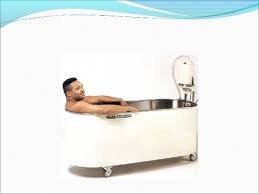
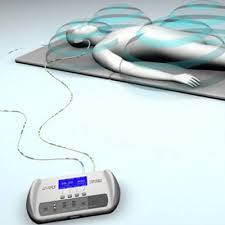
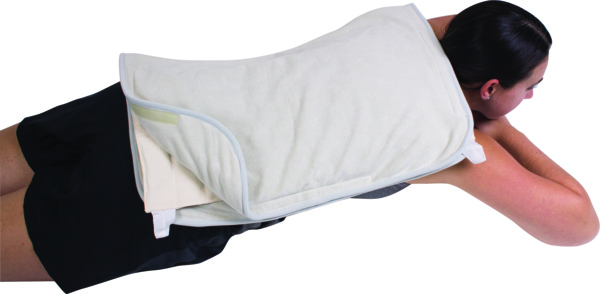
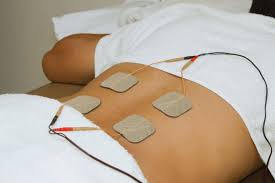
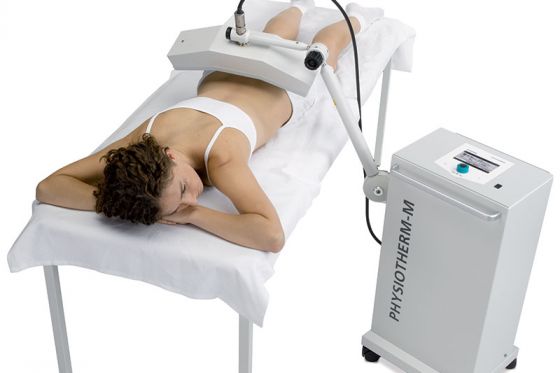
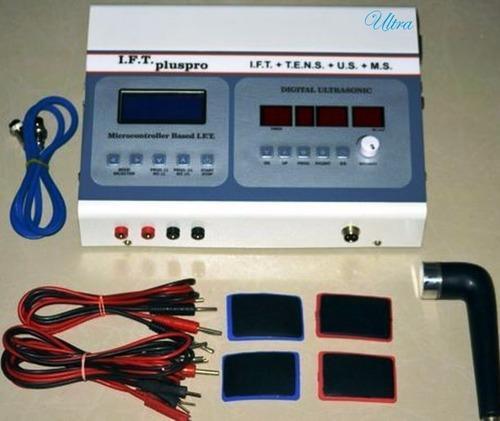
One Comment